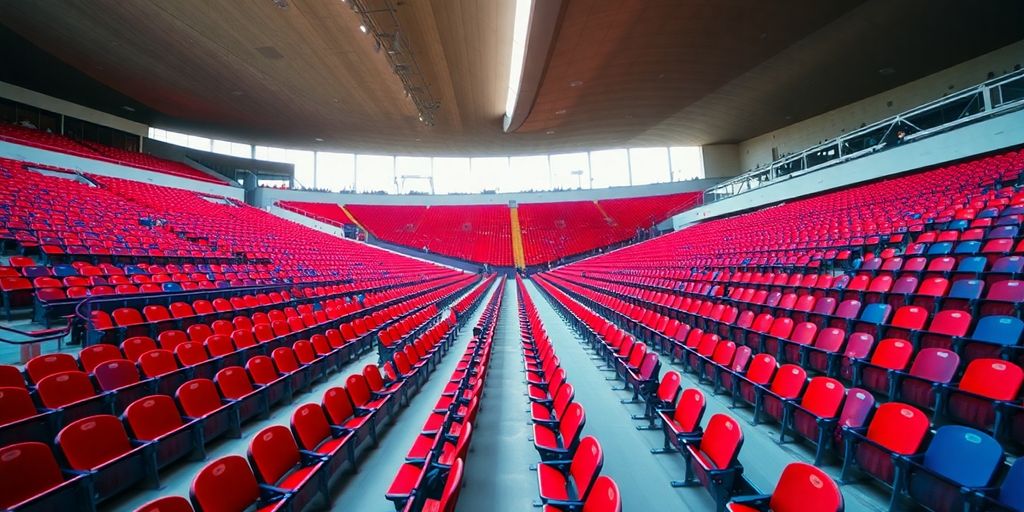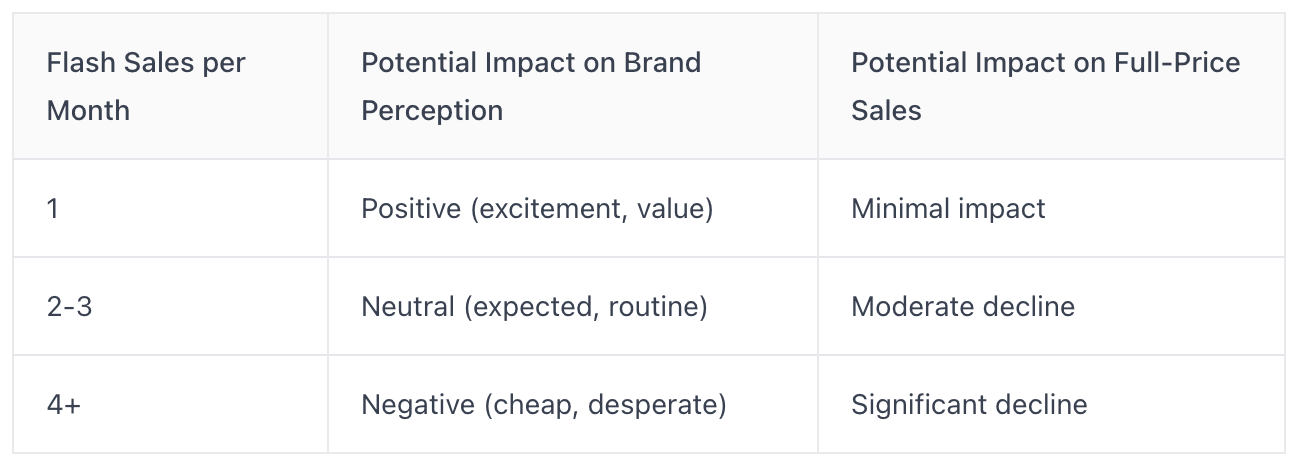Register as an organizer
Click the button below and finish your organizer registration, or fill out the form and we will be in touch to assist you.
.jpeg)
Ever wonder why those amazing flash sales for flights and events seem to have disappeared? It's not just you. The world of last-minute deals has changed a lot. What used to be a common way for companies to fill empty spots has become less frequent. But don't worry, there's still a way to make these sales work, especially for those times when demand is low. We're going to talk about how to bring back the magic of flash sales and make them actually useful in today's market.
Flash sales used to be the way airlines filled those last few seats and stirred up some excitement. Remember the thrill of snagging a crazy cheap flight? But lately, it feels like those deals are harder to come by. What happened? Well, a few things have changed in the industry that have made the traditional flash sale less effective than it used to be.
Think about it: airlines have merged and acquired each other like crazy over the last decade. This means fewer players controlling more of the market. When you have fewer airlines competing head-to-head, there's less pressure to slash prices just to undercut the competition. They don't need to engage in those airfare wars as much anymore. For example, in Atlanta, one airline controls almost 80% of the traffic. That's a lot of power, and it reduces the need for e-commerce marketing strategy to attract customers.
Remember the days of airlines guessing how many seats they'd sell on a particular route? Those days are long gone. Now, they have super-smart computer programs that can predict demand with pretty impressive accuracy. These algorithms take into account everything from historical data to current booking trends, allowing airlines to manage their inventory much more efficiently. This means fewer empty seats to begin with, and less need to resort to desperate, last-minute discounts.
Let's face it: people are traveling more than ever. With travel demand at record highs, airlines don't have to work as hard to fill their planes. When seats are already selling well, there's simply less incentive to offer deep discounts. Why sell a seat for $20 when someone is willing to pay $200? It's basic economics. Airlines are focusing on maximizing revenue, and that often means saying goodbye to those ultra-cheap flash sales.
The shift away from flash sales isn't necessarily a bad thing for airlines. It reflects a more stable and predictable market, where they can focus on long-term profitability rather than short-term gains. However, for budget-conscious travelers, it means having to be more strategic and patient in their search for deals.

Modern flash sales aren't just about dumping inventory; they're about smart scheduling. Airlines, for example, now use them to fill seats during the off-season or on less popular routes. Think Tuesdays and Wednesdays, or flights to destinations that aren't typically tourist hotspots during certain times of the year. This targeted approach maximizes revenue without devaluing the brand.
Flash sales can be a great way to get people talking about your brand. A well-executed sale generates buzz on social media and can attract new customers who might not have considered your product or service otherwise. It's like a limited-time event that creates excitement and encourages people to book a bargain seat before it's too late. Here's how to make it work:
Flash sales can be a competitive weapon. By strategically cutting prices on routes or services where rivals dominate, you can force them to match your lower fares, potentially squeezing their profit margins. It's a risky move, but it can be effective in gaining market share. It's like a price war, but with a clear end date. Southwest Airlines, for example, has used flash sales to generate demand for their flights.
This strategy should be approached with caution. Engaging in aggressive price wars can damage profitability for everyone involved. It's important to carefully consider the potential consequences before launching a flash sale aimed at undercutting competitors.
Flash sales can be a great way to fill seats, but only if the offers are actually appealing. It's not enough to just slap a discount on something and hope for the best. You need to think strategically about what makes an offer truly irresistible to potential customers. Let's explore some key elements.
The shorter the sale, the greater the sense of urgency. A sale that lasts for a week might not feel as pressing as one that ends in 24 hours. Think about it: people are more likely to act fast if they know they're about to miss out. JetBlue once had a flash sale that sold out in under 60 seconds! That's the kind of buzz you want to create. Make sure the end date and time are prominently displayed. This encourages quick decisions and prevents customers from delaying their purchase, which they might forget about later. This is especially important for eCommerce flash sales.
Don't just offer a discount on any flight, any time. Instead, focus on specific travel windows that are typically slower. This helps you fill seats that would otherwise go empty without cannibalizing sales during peak periods. For example, you might offer discounts on flights during the middle of the week or during off-season months. Blackout dates are also important. If you don't want the sale to apply during the holidays, make that clear from the start.
Instead of offering a general discount, consider featuring specific destinations that are particularly appealing. Maybe it's a new route you're trying to promote, or a destination that's been trending on social media. By highlighting these exclusive destinations, you can create a sense of excitement and intrigue that encourages people to book. Think about what makes a destination special and emphasize those aspects in your marketing materials.
Flash sales are a powerful tool, but they need to be handled with care. The goal is to create a win-win situation where customers get a great deal and you fill empty seats. By focusing on clear time constraints, specific travel windows, and exclusive destinations, you can craft offers that are truly irresistible.
Okay, so you've got this awesome flash sale planned. Now, how do you make sure people actually see it? That's where digital channels come in. It's not enough to just throw something up on your website and hope for the best. You need a strategy. Think about where your target audience spends their time online and tailor your approach accordingly. Let's break down some key areas:
Social media is your megaphone. But just shouting into it won't work. You need to be strategic. Consider these points:
Email might seem old-school, but it's still incredibly effective, especially if you've already built up a subscriber list. Here's how to make the most of it:
Don't just send people to your homepage. Create a dedicated landing page specifically for the flash sale. This allows you to control the message and provide a seamless user experience.
Think of your digital channels as a coordinated team. Social media creates buzz, email nurtures leads, and landing pages convert visitors into customers. When all three work together, you'll see a significant boost in your flash sale performance.
Flash sales are exciting, but if you don't track how they perform, you're basically flying blind. It's not just about selling tickets; it's about understanding why certain sales work and others don't. This section is all about figuring out what went right (or wrong) and tweaking your approach for the next time.
The most basic metric is, of course, how many seats you sold. But dig deeper! What was the conversion rate (percentage of people who saw the offer and actually bought something)? What was the sell-through rate (percentage of available seats that were sold during the flash sale)? Compare these numbers to your usual sales figures. If the flash sale didn't significantly outperform your regular sales, something's off. Look at which destinations or travel dates performed best. This data helps you refine future offers.
Numbers tell one story, but customer feedback tells another. Send out short surveys after the flash sale. Ask about the booking process, the perceived value of the offer, and whether they would participate in future sales. Social media is also a goldmine. Monitor mentions of your brand and the flash sale. What are people saying? Are they happy with their purchase? Were there any technical glitches? This qualitative data is invaluable for identifying pain points and areas for improvement. You can also use tools to monitor campaign performance.
Don't just run a flash sale and forget about it. Use the data you've collected to make the next one even better. Did a particular destination flop? Maybe it's not appealing to your target audience, or maybe the discount wasn't deep enough. Did a specific time of day generate the most sales? Schedule future sales accordingly. A/B test different offers, time constraints, and marketing messages to see what resonates best. It's all about continuous improvement. Here's an example of how you might track and adjust:
Remember, every flash sale is a learning opportunity. By carefully analyzing the results and adapting your strategies, you can turn these short-term promotions into a powerful tool for driving revenue and building brand loyalty.
Here's another example:

This table shows a clear improvement between two flash sales, indicating that the adjustments made after the first sale were effective. Keep experimenting and refining your approach, and you'll be well on your way to flash sale success. You can also look at airline flash sales for inspiration.
While airlines might be the first thing that comes to mind when you think of flash sales, the strategy is super effective for tons of other businesses too. Think about it – anything with limited capacity or time-sensitive inventory can benefit from a well-executed flash sale. It's all about creating that sense of urgency and excitement to drive quick sales. Let's look at some examples.
Hotels can use flash sales to fill rooms during off-peak seasons or last-minute cancellations. Imagine a "24-Hour Room Blowout" offering steep discounts on unsold rooms for the upcoming weekend. This not only helps fill those empty rooms but also introduces new customers to the hotel. It's a win-win. Hotels can also partner with local attractions to create package deals, further sweetening the offer. This is a great way to boost occupancy rates and revenue during slow periods. For example, a hotel near a popular ski resort could offer a flash sale on rooms during the shoulder season, attracting budget-conscious skiers and snowboarders.
Event venues, like concert halls and theaters, can use flash sales to sell remaining tickets for upcoming shows. A "Last-Minute Ticket Frenzy" could offer discounted tickets for shows happening within the next week. This is especially useful for events that haven't sold out completely. Think about it: a local theater offering half-price tickets to a play the day before opening night. It fills seats that would otherwise be empty and creates a buzz around the production. Don't forget about student rush offers for a younger audience!
Tour operators and other transportation services can also benefit from flash sales. A bus company could offer a "Weekend Getaway Blitz" with discounted fares on popular routes. This encourages spontaneous travel and helps fill seats that might otherwise go empty. Similarly, a tour operator could offer a flash sale on a day trip to a nearby attraction. This is a great way to attract locals and tourists alike. Here's an example of how a tour operator might structure a flash sale:
Flash sales are a powerful tool for businesses across various industries. By creating a sense of urgency and offering compelling discounts, companies can drive sales, attract new customers, and boost revenue. The key is to carefully plan and execute the sale, ensuring that it aligns with the overall marketing strategy and brand image.

Flash sales can be a powerful tool, but they're not without their risks. A poorly executed flash sale can damage your brand, frustrate customers, and ultimately cost you money. It's important to plan carefully and anticipate potential problems.
Your website and servers need to be able to handle the increased traffic that a flash sale will generate. Imagine launching a sale with ultra-cheap fares only to have your site crash within minutes. This is a common problem, and it's easily avoidable with proper planning. Load testing is essential to identify bottlenecks and ensure your infrastructure can scale to meet demand. Consider using a content delivery network (CDN) to distribute content and reduce the load on your servers. Also, have a backup plan in place in case something does go wrong.
Flash sales are inherently limited-time offers, and not everyone will get what they want. It's important to be transparent about the terms and conditions of the sale, including the number of items available, the duration of the sale, and any restrictions that apply.
Unclear communication leads to frustrated customers. Make sure your messaging is clear, concise, and easy to understand. Use plain language and avoid jargon. Be upfront about any limitations or restrictions.
While flash sales can drive short-term revenue, overusing them can damage your brand in the long run. Customers may start to expect discounts and become less willing to pay full price. It's important to use flash sales strategically and sparingly. Think about the long-term impact on your brand before launching another sale. Consider the following:
Here's a simple table illustrating the potential impact of flash sale frequency:

So, what's the big takeaway here? Flash sales, when done right, can totally fill those empty seats. It's not just about slashing prices; it's about being smart with how you do it. Think about what your customers really want, and then give it to them in a way that feels special. Don't just throw out a random deal and hope for the best. Plan it out, make it exciting, and watch those seats disappear. It's a simple idea, but it works.
Flash sales are special deals where airlines or other companies sell tickets or services at very low prices for a short time. They're meant to fill up empty seats or rooms quickly.
In the past, flash sales were more common. But now, big airlines have joined together, meaning less competition. Also, more people are traveling, and airlines use smart computer programs to fill planes better, so they don't need to offer as many deep discounts.
Even though big airlines use them less, smaller airlines still use flash sales to get people's attention and compete. They're also used to create buzz and get people to visit their websites, hoping they'll book other, more expensive trips.
Yes! You can find flash sales for hotels, concert tickets, bus rides, and even tours. Any business that has a 'perishable' product (something that loses value if not sold by a certain time, like an empty hotel room tonight) can use this idea.
To find the best deals, you need to be quick! Follow airlines and travel companies on social media, sign up for their email lists, and check their websites often. Deals can disappear in minutes.
Airlines often put rules on flash sales, like specific travel dates (often during slower times), no changes allowed, or only certain routes. Always read the fine print carefully before you buy.
More blogs
Click the button below and finish your organizer registration, or fill out the form and we will be in touch to assist you.